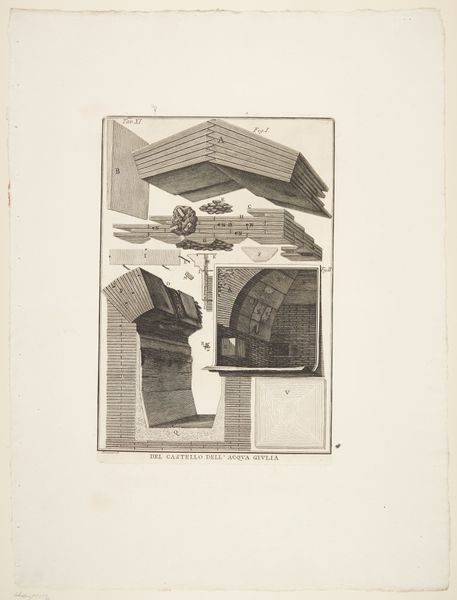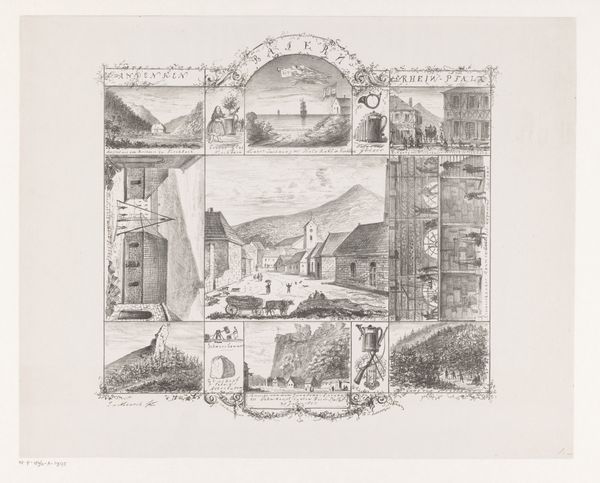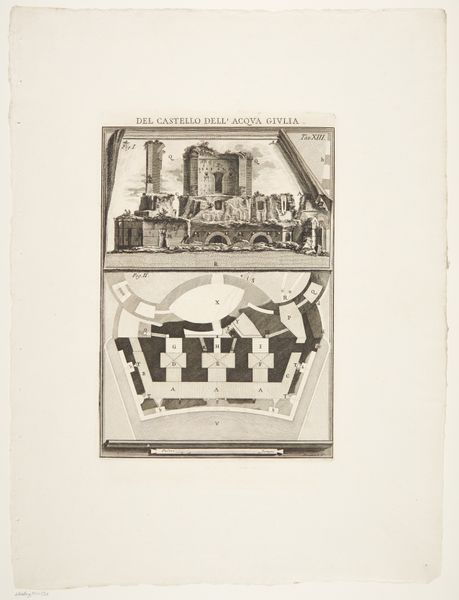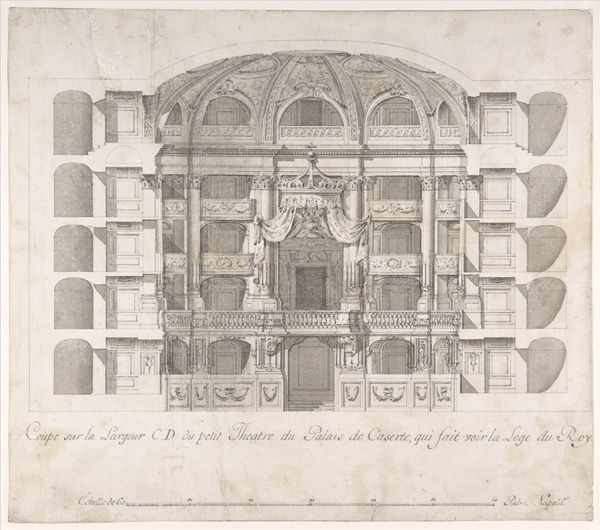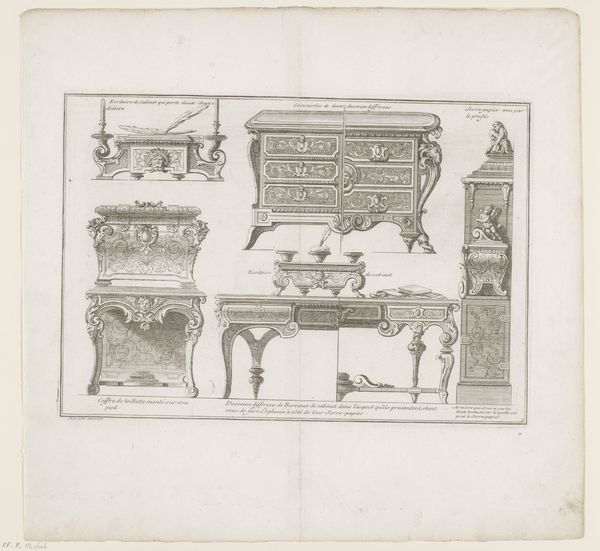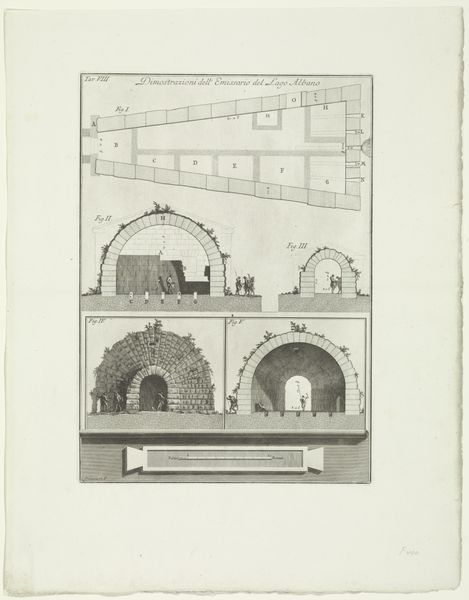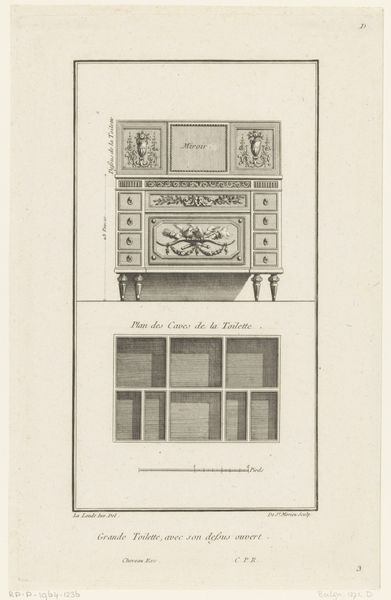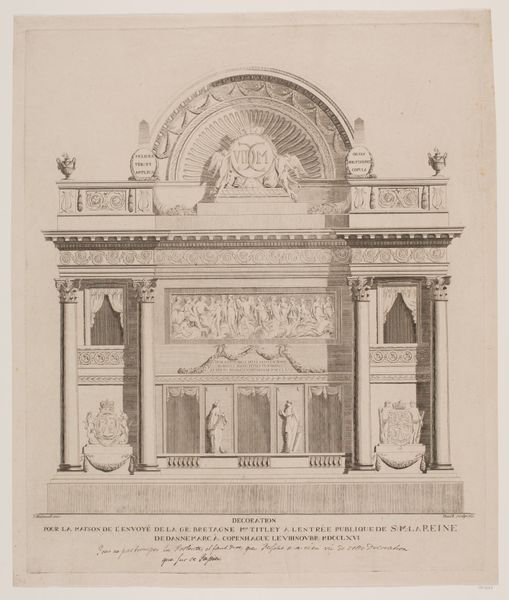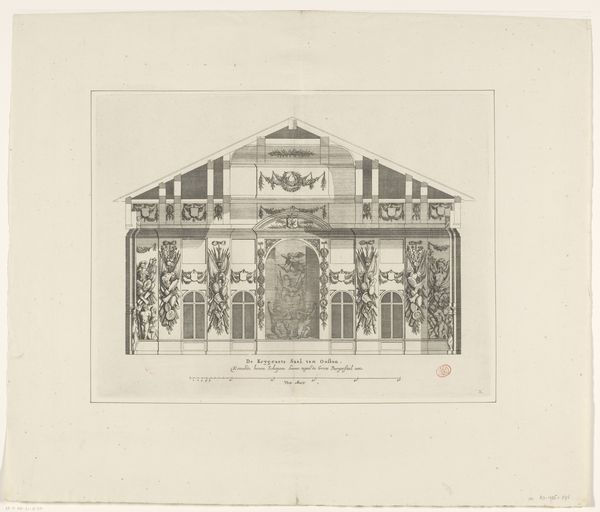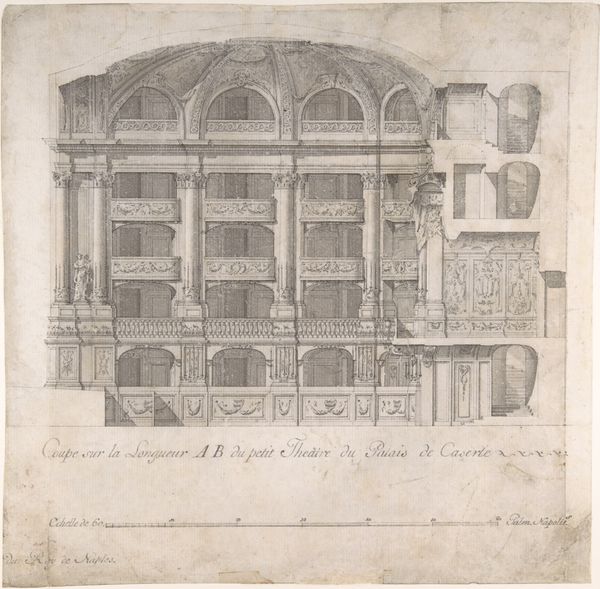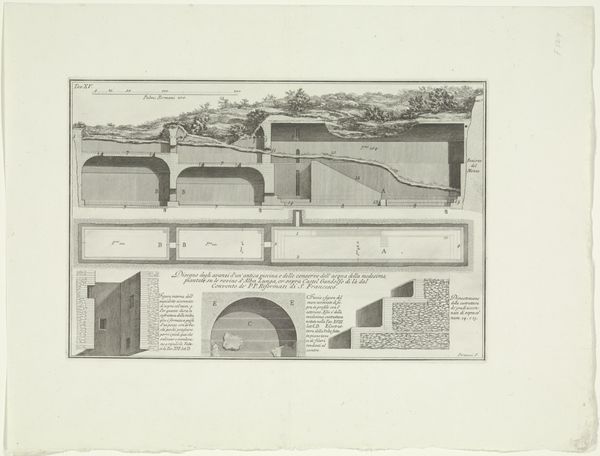
Dimensions: height 185 mm, width 270 mm, height 160 mm, width 217 mm
Copyright: Rijks Museum: Open Domain
Curator: This etching, created around 1762 by Giovanni Battista Piranesi, is titled "Graftombe en een ondergronds verwarmingssysteem," which translates to "Burial Tomb and an Underground Heating System." It is currently held in the Rijksmuseum collection. What are your initial thoughts on this piece? Editor: It's intriguing how the tomb is presented both as a monumental ruin overtaken by nature and a precisely diagrammed infrastructure. It makes me think about the inherent contradictions of power and its relationship to the natural world. Curator: Indeed. Piranesi's work is deeply embedded within the socio-political and intellectual landscape of his time. He was fascinated with ancient Roman architecture, not just aesthetically, but also in terms of its symbolism. The grandeur and the decay both spoke to the rise and fall of civilizations and, by extension, the ephemerality of power structures. Editor: It's also interesting how the etching combines a visual representation of the tomb with an architectural drawing. The "underground heating system" is almost clinical, revealing the mechanics that operate unseen. How do you think the representation challenges, or maybe confirms, prevailing ideas about class? Curator: Well, if you consider that the heating system implies a degree of luxury or at least control over the environment, and you juxtapose that with the finality of death represented by the tomb, it suggests a confrontation with mortality irrespective of privilege. And that text below… are those Piranesi’s notations? Editor: They are! Given the way that this work uses Baroque dramaticism, alongside the style that renders the architectural qualities so precise and 'clean,' one wonders whether the very combination of forms of display is challenging, in some sense, to whom this kind of knowledge would typically be conveyed? Curator: I think that's precisely Piranesi's challenge, as it confronts us today. He asks us to rethink how we build legacies and systems of power by forcing a comparison of what's lasting, who benefits from these things, and who can perceive them. Editor: Thinking about it now, it seems Piranesi poses essential questions about class and legacies. It encourages reflection on the systems we inherit. Curator: And, for me, Piranesi always connects past, present, and future… encouraging constant re-evaluation of societal progress, and the way power interacts with inevitable decay.
Comments
No comments
Be the first to comment and join the conversation on the ultimate creative platform.
